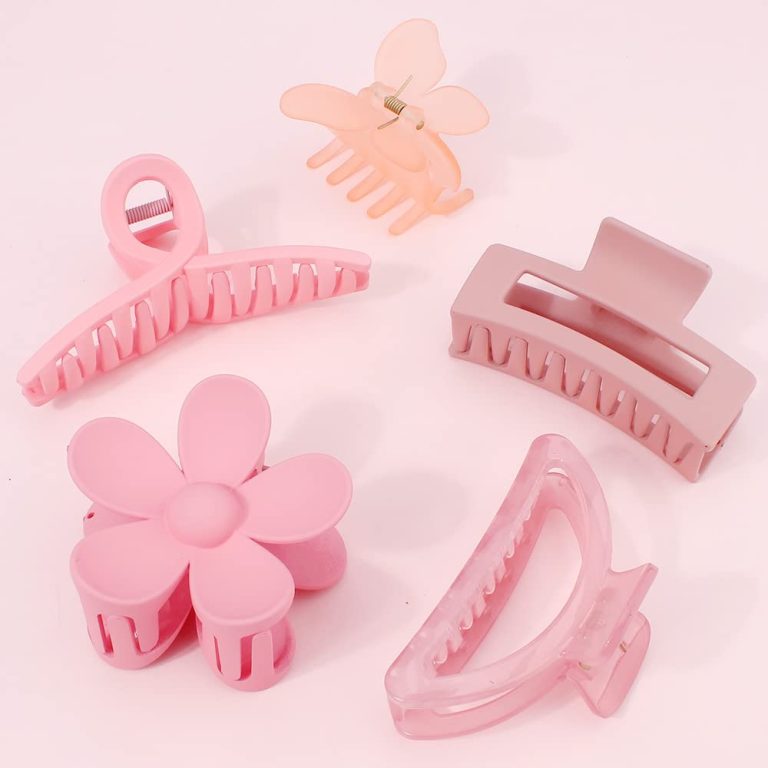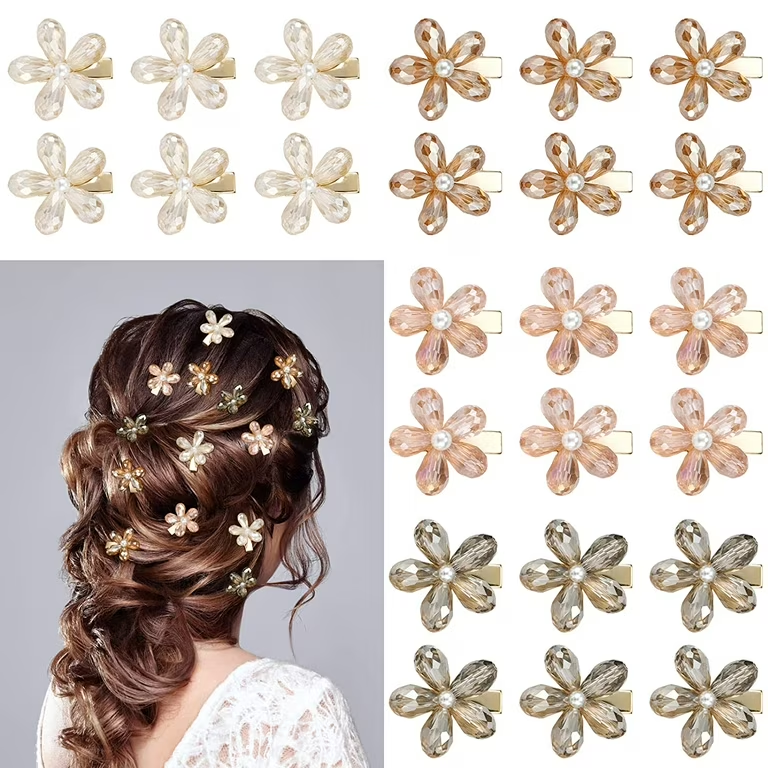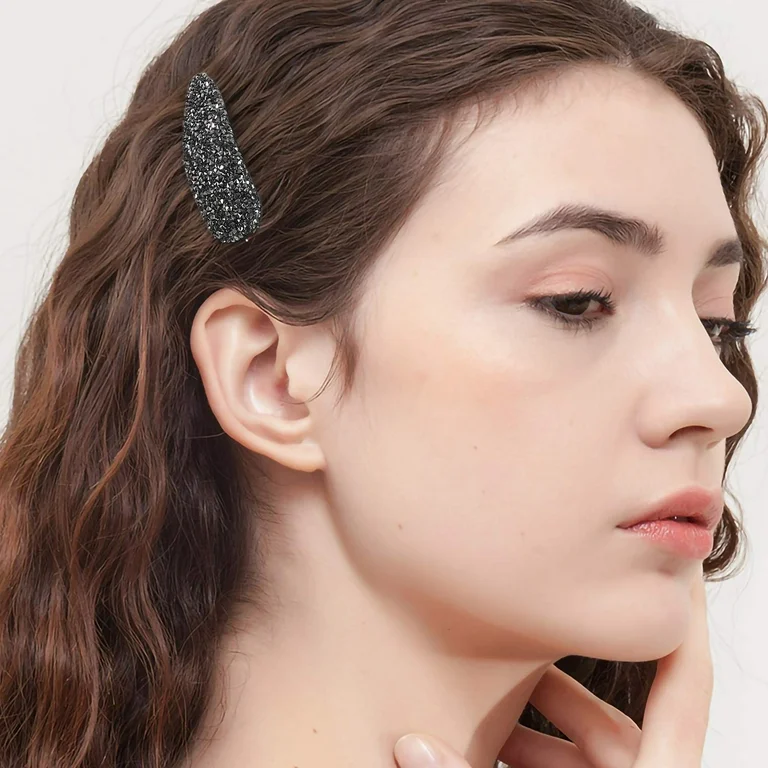
Black Hair Clips: Versatile Accessories for Every Style
The Timeless Appeal of Black Hair Clips
Black hair clips stand as timeless accessories in the world of hair styling, offering a perfect blend of functionality and fashion. These versatile tools have graced the heads of countless individuals, from busy professionals to trendsetting celebrities. The enduring popularity of black hair clips stems from their ability to complement any hair color and style effortlessly. Unlike their colorful counterparts, black clips provide a subtle, sophisticated touch that doesn’t overpower the overall look. They seamlessly blend with dark hair, creating a sleek appearance, while offering an striking contrast against lighter shades.
Moreover, black hair clips possess a chameleon-like quality, adapting to various occasions with ease. Whether attending a formal event or running errands, these accessories maintain their relevance and charm. The neutral nature of black allows these clips to pair harmoniously with any outfit, making them a go-to choice for those seeking a polished finish to their hairstyle. As fashion trends come and go, black hair clips remain a constant, reliable presence in the beauty world. Their enduring appeal lies not only in their aesthetic versatility but also in their practical benefits, offering a simple yet effective solution for hair management and style enhancement.
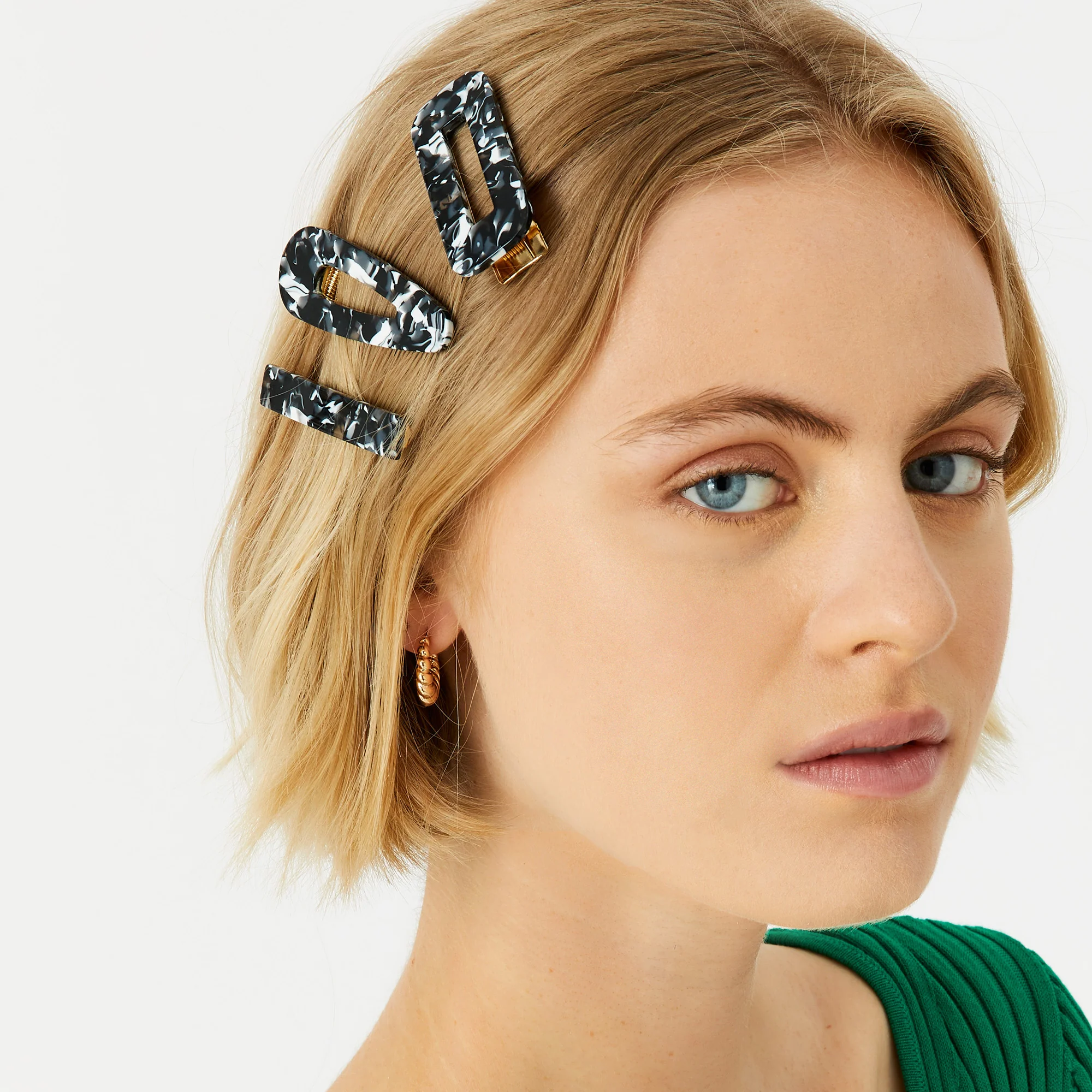
Types of Black Hair Clips: A Comprehensive Overview
The world of black hair clips boasts an impressive array of styles, each designed to cater to specific hair types, lengths, and styling needs. Knowing the different types available can help in choosing the perfect clip for any occasion. Firstly, claw clips, with their hinged design and interlocking teeth, excel at holding thick sections of hair securely. These come in various sizes, from mini versions for partial updos to large ones capable of grasping an entire head of hair. Snap clips, also known as contour clips, feature a flat design that sits close to the head, making them ideal for securing flyaways or creating sleek, minimalist styles.
Bobby pins, though small, pack a mighty punch in styling versatility, perfect for intricate updos or subtle hair control. Barrettes offer a more decorative option, often featuring embellishments while still providing reliable hold. For those with finer hair, flat clips with their smooth, seamless design, prevent slipping and damage. Duckbill clips, characterized by their wide, flat shape, are excellent for sectioning hair during styling or coloring processes. Butterfly clips, popular in the 90s and making a comeback, offer a whimsical touch while effectively holding hair in place. Banana clips, with their curved shape, create an effortless ponytail effect. Lastly, alligator clips, with their strong grip, are favored by hairstylists for sectioning and styling. Each type of black hair clip brings its unique strengths to the table, allowing for endless styling possibilities.
Choosing the Right Black Hair Clip for Your Hair Type
Selecting the appropriate black hair clip for your specific hair type ensures both comfort and effectiveness in styling. For those blessed with thick, voluminous locks, sturdy claw clips or large barrettes offer the strength needed to hold heavy hair in place without slipping. These clips’ robust construction can handle the weight and volume without straining or breaking. Conversely, individuals with fine or thin hair benefit from lighter options like snap clips or bobby pins. These smaller clips provide a secure hold without weighing down delicate strands or causing breakage. Those with curly or textured hair might find wide-tooth comb clips or duckbill clips particularly useful, as they can grasp hair without disrupting natural curl patterns.
For sleek, straight hair, flat clips or contour clips work wonders in maintaining a smooth appearance without creating unwanted bumps or creases. People with medium-thickness hair enjoy the most versatility, able to use a wide range of clip types depending on the desired style. When dealing with layered haircuts, a combination of clip sizes often yields the best results, with smaller clips tackling shorter layers and larger ones securing longer sections. Regardless of hair type, it’s crucial to choose clips with smooth edges and secure closures to prevent tangling and damage. By matching the clip type to your hair’s unique characteristics, you can achieve lasting, comfortable styles that enhance your natural beauty.
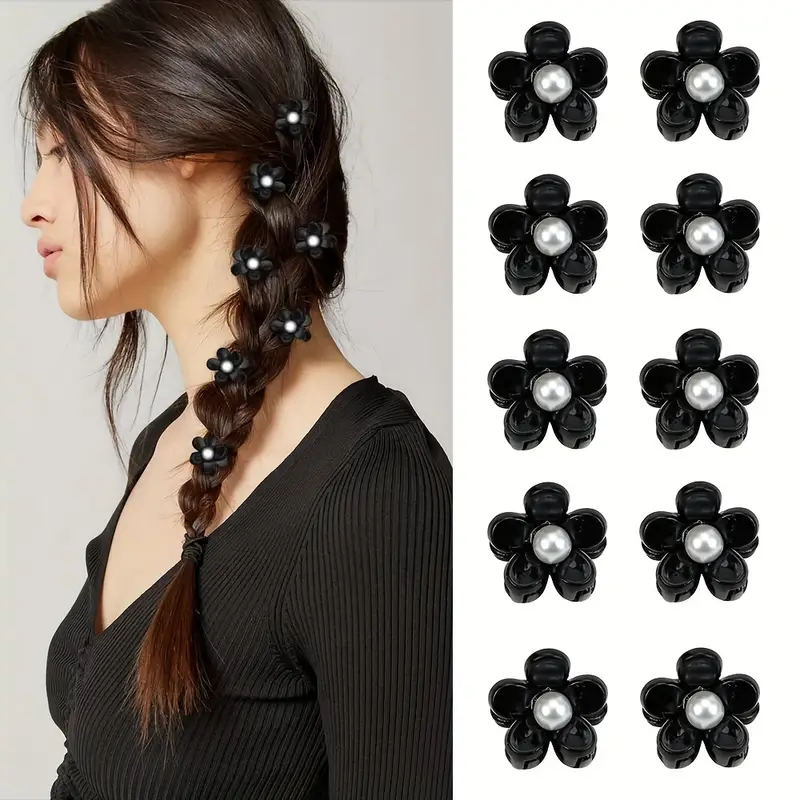
Styling Techniques Using Black Hair Clips
Black hair clips serve as versatile tools in creating a myriad of hairstyles, from effortlessly chic to intricately elegant. For a quick and easy half-up style, gather the top section of hair and secure it at the back of the head with a medium-sized claw clip. This classic look works well for both casual and semi-formal occasions. To elevate the style, twist the gathered section before clipping for added texture. For a sleek, professional look, use multiple flat clips to create a low, horizontal line at the nape of the neck, tucking hair underneath for a faux bob effect.
This technique works particularly well for those with longer hair looking to change their look without committing to a cut. Braided styles benefit from the strategic placement of small clips or bobby pins, which can secure loose ends and add decorative elements to the braid. For a more formal updo, use a combination of clip sizes to build height and structure. Start by sectioning the hair and securing each section with duckbill clips. Then, create loops or twists, pinning them in place with smaller clips or bobby pins. The final look can be softened by gently pulling out a few face-framing tendrils. For those with bangs, snap clips offer an easy way to change up your look by pushing them to the side or pulling them straight back. Experiment with symmetrical and asymmetrical placements to find what complements your face shape best.
Black Hair Clips in Fashion History
Black hair clips have played a significant role in fashion history, evolving from purely functional items to style statements in their own right. In the early 20th century, simple black bobby pins gained popularity as women embraced shorter hairstyles, using these discreet clips to control and shape their new cuts. The 1940s and 1950s saw the rise of more decorative barrettes, often featuring Art Deco-inspired designs in jet black, complementing the elegant hairstyles of the era. As the 1960s ushered in more experimental fashion, black hair clips adapted to hold the voluminous beehives and bouffants in place, with larger, more structural designs coming to the forefront.
The 1970s embraced a more natural aesthetic, with simple black clips used to create effortless, bohemian-inspired styles. The 1980s witnessed a explosion of hair accessory trends, with black banana clips and large claw clips becoming iconic symbols of the decade’s bigger-is-better philosophy. In the 1990s, butterfly clips reigned supreme, with black versions offering a slightly edgier take on the playful trend. The early 2000s saw a return to sleeker styles, with discreet black clips used to create polished, minimalist looks. In recent years, there’s been a resurgence of interest in retro hair accessories, with vintage-inspired black clips making a comeback on runways and red carpets alike. Throughout these fashion eras, black hair clips have consistently offered a sophisticated, versatile option for hair styling, adapting to changing trends while maintaining their timeless appeal.
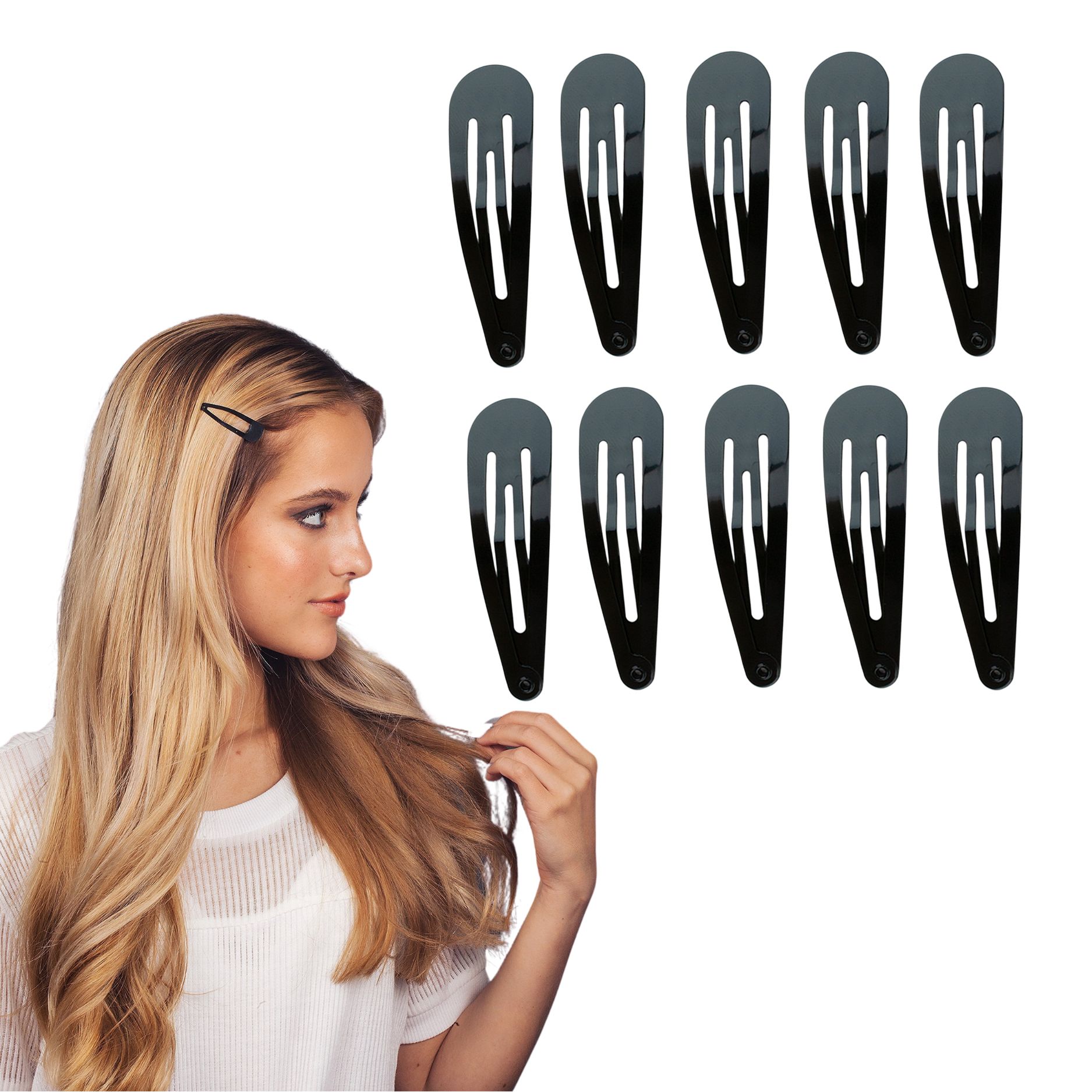
The Science Behind Hair Clips: Materials and Design
The effectiveness of black hair clips lies not just in their appearance, but in the science behind their materials and design. Most modern hair clips utilize a combination of materials to achieve optimal performance. The body of the clip often consists of durable plastics like nylon or ABS (Acrylonitrile Butadiene Styrene), chosen for their strength, flexibility, and resistance to breakage. These materials undergo rigorous testing to ensure they can withstand repeated use without losing their shape or grip.
The spring mechanism in clips like bobby pins and snap clips typically uses metal, often steel with a black coating, to provide the necessary tension for a secure hold. This metal undergoes a tempering process to achieve the right balance between flexibility and strength. The teeth or prongs of claw clips and combs are designed with precision, their spacing and shape carefully calculated to grip hair effectively without causing damage. Some high-end clips incorporate silicone or rubber elements to enhance grip and prevent slipping, especially useful for those with fine or silky hair.
The hinges on claw clips and barrettes are engineered to withstand thousands of open-close cycles without weakening. In recent years, advancements in materials science have led to the development of bio-based plastics for more environmentally friendly options. Additionally, the black color itself is achieved through various dyeing processes or the addition of carbon black to the base material, ensuring color fastness and resistance to fading. This combination of material science and engineering results in black hair clips that not only look sleek but also perform reliably across various hair types and styling needs.
Caring for Your Black Hair Clips
Proper care and maintenance of black hair clips not only prolongs their lifespan but also ensures they remain hygienic and effective. Regular cleaning stands as the cornerstone of clip care. For plastic clips, a simple wash with mild soap and warm water removes product buildup and oils that can accumulate over time. Metal clips benefit from occasional disinfection with rubbing alcohol to eliminate bacteria. After cleaning, thoroughly dry the clips to prevent rusting in metal components.
Avoid exposing hair clips to excessive heat, such as leaving them in direct sunlight or near heat sources, as this can warp plastic clips or weaken metal springs. When not in use, store clips in a cool, dry place, preferably in a dedicated container to prevent loss or damage. For clips with hinges or moving parts, a tiny drop of mineral oil applied occasionally can keep the mechanism working smoothly. Be mindful of how you open and close clips; using excessive force can strain the springs or crack the plastic.
If a clip begins to lose its grip, gently bend metal clips inward or replace plastic ones to maintain effective hold. When traveling, store clips in a protective case to prevent bending or breaking. For decorative clips, avoid exposure to harsh chemicals like hairspray or styling products, which can dull their finish. By incorporating these care practices into your routine. You can ensure your black hair clips remain a reliable part of your hair styling arsenal for years to come.
Black Hair Clips in Professional Settings
In professional environments, black hair clips serve as invaluable tools for maintaining a polished, put-together appearance. Their neutral color allows them to blend seamlessly with various hair colors and professional attire. Making them a staple in office settings. For long-haired professionals, a sleek bun or French twist secured with black claw clips or bobby pins projects an image of competence and attention to detail. In more conservative workplaces, discreet black snap clips can tame flyaways without drawing undue attention.
For those in creative fields, larger or more decorative black clips can make a style statement while still maintaining a professional edge. During presentations or important meetings, reliable black clips ensure hair stays in place. Allowing the focus to remain on your words and ideas rather than stray locks. In professional photoshoots or video conferences, black clips can be used to create camera-ready styles that look effortless and polished.
For those in active professions, sturdy black clips keep hair securely out of the face. Combining functionality with a professional appearance. Many workplaces have dress codes that extend to hair accessories, and black clips usually meet even the strictest guidelines. In client-facing roles, well-chosen black hair clips contribute to an overall image of professionalism and attention to detail. By choosing the right black hair clips for your professional setting. You can ensure your hairstyle enhances rather than distracts from your work performance.

DIY Customization of Black Hair Clips
While black hair clips offer classic elegance on their own, customization allows for personal expression and unique style. Embellishing plain black clips transforms them into one-of-a-kind accessories. Start by gathering materials such as rhinestones, pearls, small flowers, or fabric scraps. For a glamorous touch, use a strong adhesive to attach rhinestones in patterns or clusters on the surface of claw clips or barrettes.
Pearl accents lend a sophisticated, vintage feel, perfect for special occasions. Fabric-covered clips offer endless possibilities; cut fabric slightly larger than the clip. Apply fabric glue, wrap tightly, and trim excess material. This technique works particularly well for snap clips and barrettes. For a nature-inspired look, attach small artificial flowers or leaves to create delicate, bohemian accessories. Polymer clay enthusiasts can mold custom designs directly onto clips, baking them to create durable, personalized pieces.
Embroidery thread can be wound around the arms of bobby pins for a colorful, textured effect. Metallic paint markers allow for intricate designs or patterns to be drawn directly onto the clips’ surface. For a temporary change, washi tape offers a quick and easy way to add color and pattern. Those skilled in beadwork can create intricate designs on larger clips, turning them into stunning statement pieces. By customizing black hair clips. You not only create unique accessories but also extend the life of older clips that might otherwise be discarded.
The Future of Black Hair Clips: Innovations and Trends
As the beauty industry continues to evolve, black hair clips are keeping pace with innovative designs and materials. Smart hair clips equipped with sensors to monitor hair health and styling habits are on the horizon. Providing users with personalized hair care recommendations. Sustainable materials are gaining traction, with biodegradable plastics and recycled metals being incorporated into clip production. Some companies are exploring 3D-printed clips, allowing for intricate designs and custom-fit options. Multifunctional clips that transform from one style to another are emerging, catering to the needs of versatile, on-the-go lifestyles.
Heat-responsive materials that change shape or grip strength based on hair temperature show promise for more adaptive styling. In terms of aesthetics, minimalist designs with clean lines and subtle textures are gaining popularity, reflecting broader trends in fashion and design. Collaborations between hair accessory brands and fashion houses are resulting in high-end. Designer black clips that blur the line between accessory and jewelry. Tech-integrated clips that double as discreet headphones or activity trackers are in development, appealing to the growing wearable technology market.
As concerns about hair damage grow, clips with specialized coatings to reduce friction and breakage are becoming more common. The future may also see the advent of color-changing clips that adapt to outfit or mood. Thanks to advances in thermochromic materials. These innovations suggest a future where black hair clips not only continue to serve their traditional styling purposes but also integrate seamlessly with technology and sustainable practices. Enhancing both form and function in exciting new ways.
